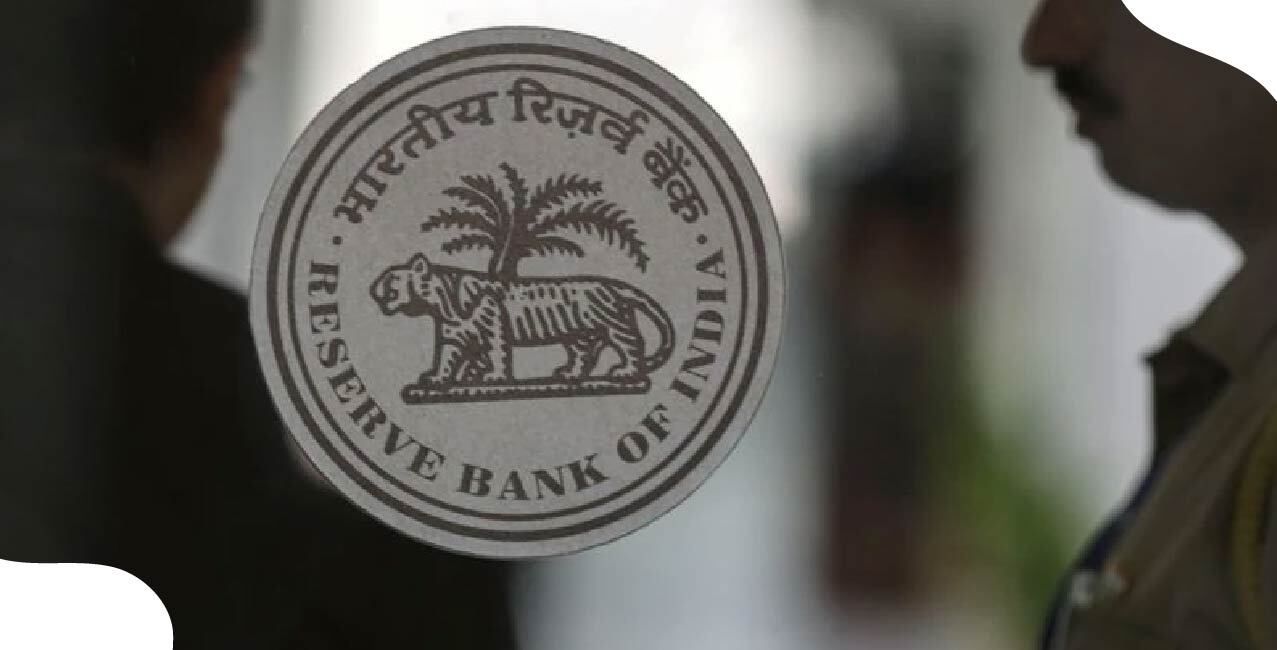
Author
LoansJagat Team
Read Time
4 Min
31 Aug 2025
RBI Announces Two-Day Reverse Repo Rate Auction Starting July 9
Banks Bid Carefully As Short-term Interest Rates Rise and Cash Piles Up
Can banks keep lending rates steady when there’s extra cash?
The Reserve Bank of India (RBI) began a two-day Variable Rate Reverse Repo (VRRR) auction on July 9, 2025, to remove ₹1 lakh crore from the banking system. This is part of its regular money management steps. The auction comes at a time when there is more cash in the system and overnight borrowing rates, which banks charge each other for short-term loans are going up.
The auction stands out because of the large amount involved and the careful way banks are placing their bids.
Why This Auction Matters Now
According to the latest July 8 figures, the banking system's liquidity is nearing ₹3.07 lakh crore. This surplus has been growing steadily due to increased government spending and a slowdown in credit demand. A large part of the banking surplus is parked in short-term instruments like overnight call money and the TREPS market.
On July 9, the RBI accepted ₹97,315 crore worth of bids out of the ₹1 lakh crore it had planned to absorb. The cut-off rate was set at 5.49 per cent. While the RBI did not receive full participation, the response still shows high bank interest in parking funds safely.
The table below shows key auction data:
Source
The higher cut-off rate compared to last week signals that banks expect liquidity to tighten slightly or rates to remain elevated in the short run.
Read More – What is Reverse Repo Rate? Meaning, Difference from Repo Rate & RBI Role
Liquidity Pressures in the Market
In its report on July 9, Business Standard stated that the overnight Weighted Average Call Rate (WACR) touched 5.34 per cent. The TREPS rate followed closely at 5.29 per cent. Both were above the RBI’s Standing Deposit Facility (SDF) floor of 5.25 per cent, suggesting mild pressure on short-term funds.
Below is the comparison of short-term rates:
Banks have been adjusting to the RBI’s preference for absorbing liquidity through short-term instruments. The VRRR auctions are designed to mop up surplus without long-term market disruptions.
According to analysts quoted in Business Standard, the surplus is expected to touch ₹5 lakh crore by the end of 2025. This projection reflects reduced credit demand, heavy inflows into government accounts, and upcoming cash reserve ratio (CRR) adjustments.
Execution via E-Kuber Platform
The auctions are conducted through the RBI’s E-Kuber platform, the centralised banking system all participating institutions use. This system allows banks to place bids and receive results quickly, typically within two hours of the auction closing.
Timings for the two-day VRRR are as follows:
The two-day auction design indicates that the RBI is carefully controlling liquidity for very short durations. It allows the central bank to manage volatility without taking long-term positions on interest rates.
Expectations Going Ahead
There are growing market expectations of a larger auction, possibly ₹2 lakh crore, in the coming days. Banks are reportedly adjusting their positions accordingly, as suggested by their bid volumes on July 9. Traders are also factoring in the possibility of more frequent short-duration VRRRs through July.
The table below outlines the recent liquidity data:
The surplus appears to be gradually reducing, which may explain the higher cut-off rate. Still, the volumes remain large enough for the RBI to continue aggressive absorption strategies.
Also Read - RBI’s ₹1 Lakh Cr VRRR Auction Sparks Uncertainty on Rate Cut Outlook
Broader Monetary Policy Direction
This auction is part of the RBI’s larger money control plan, as outlined in its June 2025 policy update. The main interest rates, the repo rate at 6.50% and the reverse repo rate at 5.25% were left unchanged. But the RBI showed it prefers to reduce extra cash using temporary tools like short-term auctions.
So far, the RBI hasn’t sold government bonds (OMO sales) or raised the Cash Reserve Ratio (CRR). Instead, it’s using these short-term steps to keep things balanced. This method gives the RBI more flexibility, especially since inflation and government borrowing are still under control.
Conclusion
The two-day Variable Rate Reverse Repo (VRRR) auction on July 9 didn’t attract the full ₹1 lakh crore the Reserve Bank of India (RBI) aimed for, but banks still showed strong interest. VRRR is a tool the RBI uses to take out extra money from the banking system for a short time, helping control liquidity.
With overnight interest rates rising and extra cash still in the system, the RBI is likely to keep using these short-term steps in the coming weeks.
Banks are closely watching for signs of tight money policies. If the cash surplus crosses ₹5 lakh crore as expected, the RBI may hold bigger and more aggressive auctions. Until then, tools like VRRR will remain its main way to manage money flow in the system.
About the Author

LoansJagat Team
‘Simplify Finance for Everyone.’ This is the common goal of our team, as we try to explain any topic with relatable examples. From personal to business finance, managing EMIs to becoming debt-free, we do extensive research on each and every parameter, so you don’t have to. Scroll up and have a look at what 15+ years of experience in the BFSI sector looks like.

Quick Apply Loan
Subscribe Now
Related Blog Post

LoansJagat Team • 10 Jun 2025

LoansJagat Team • 06 Jun 2025

LoansJagat Team • 22 Sep 2025